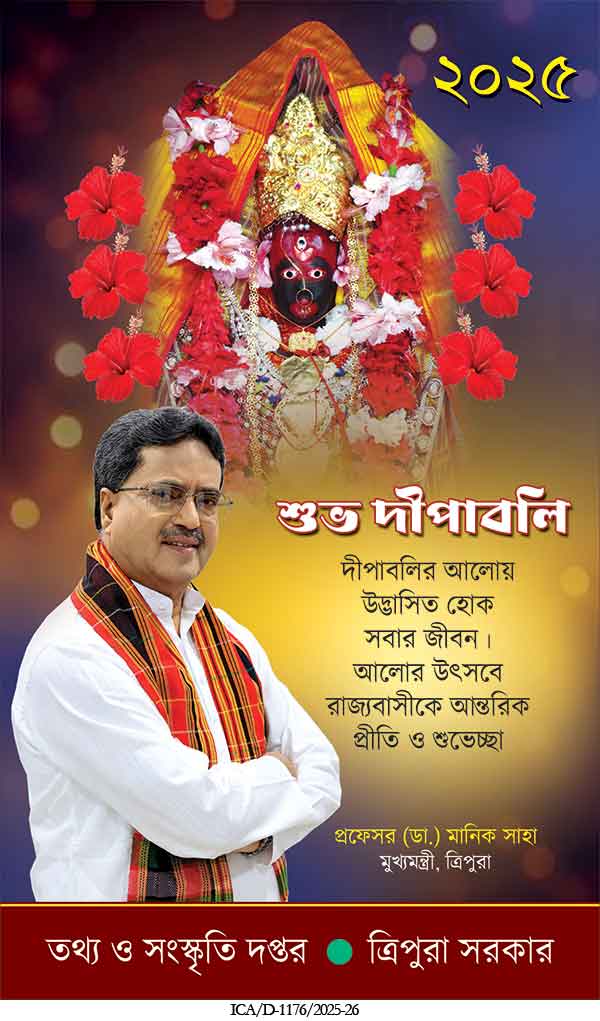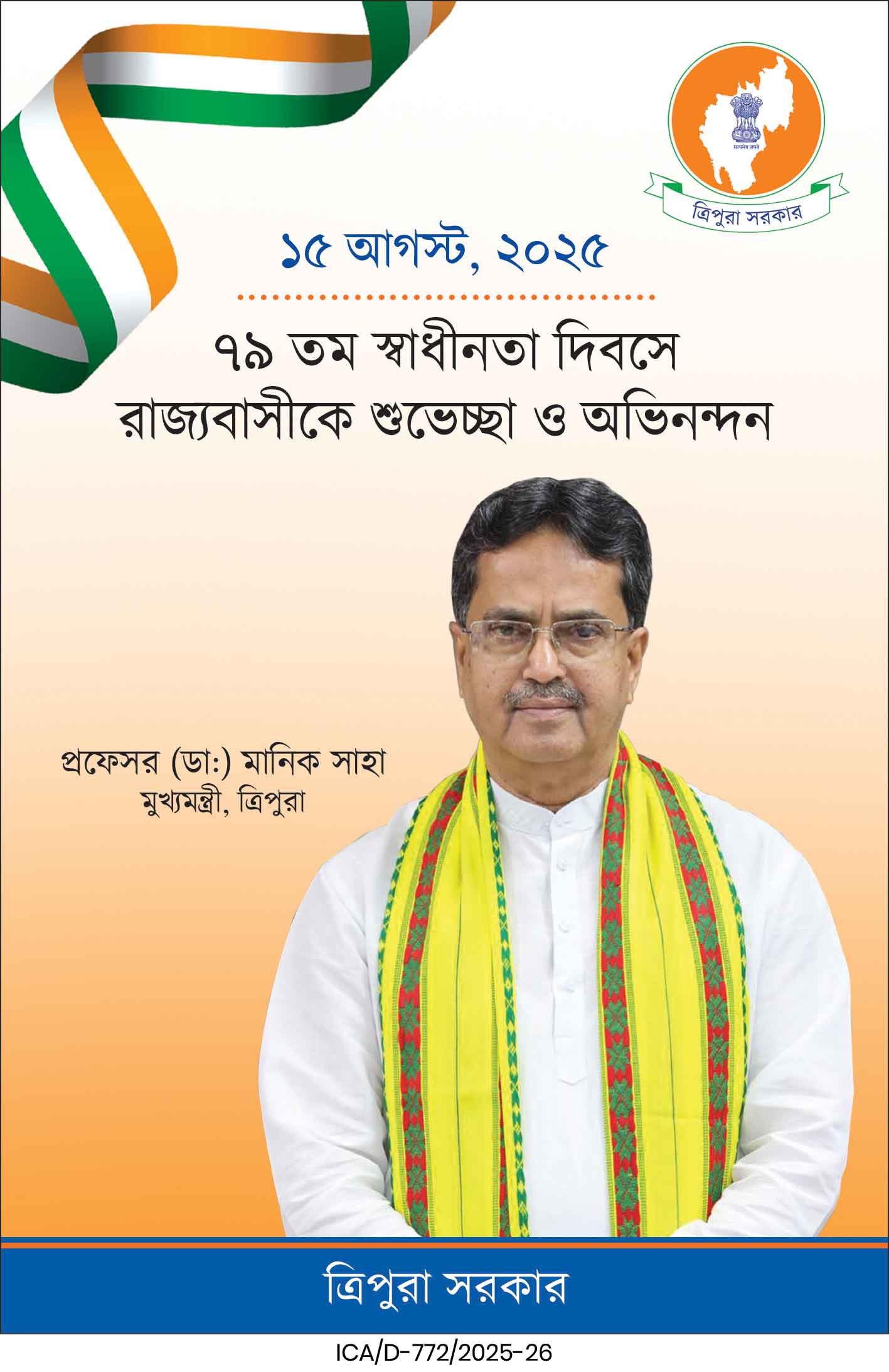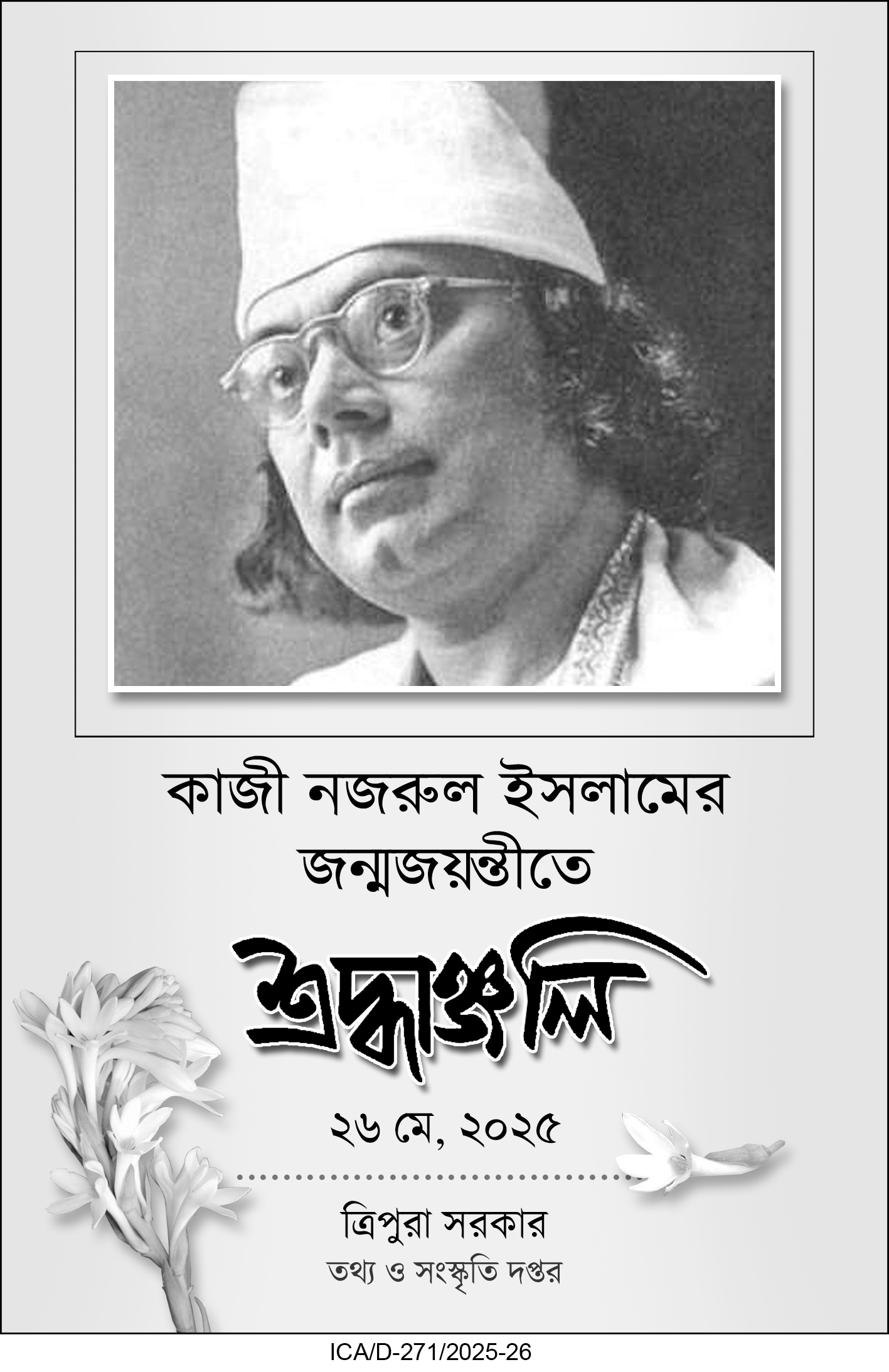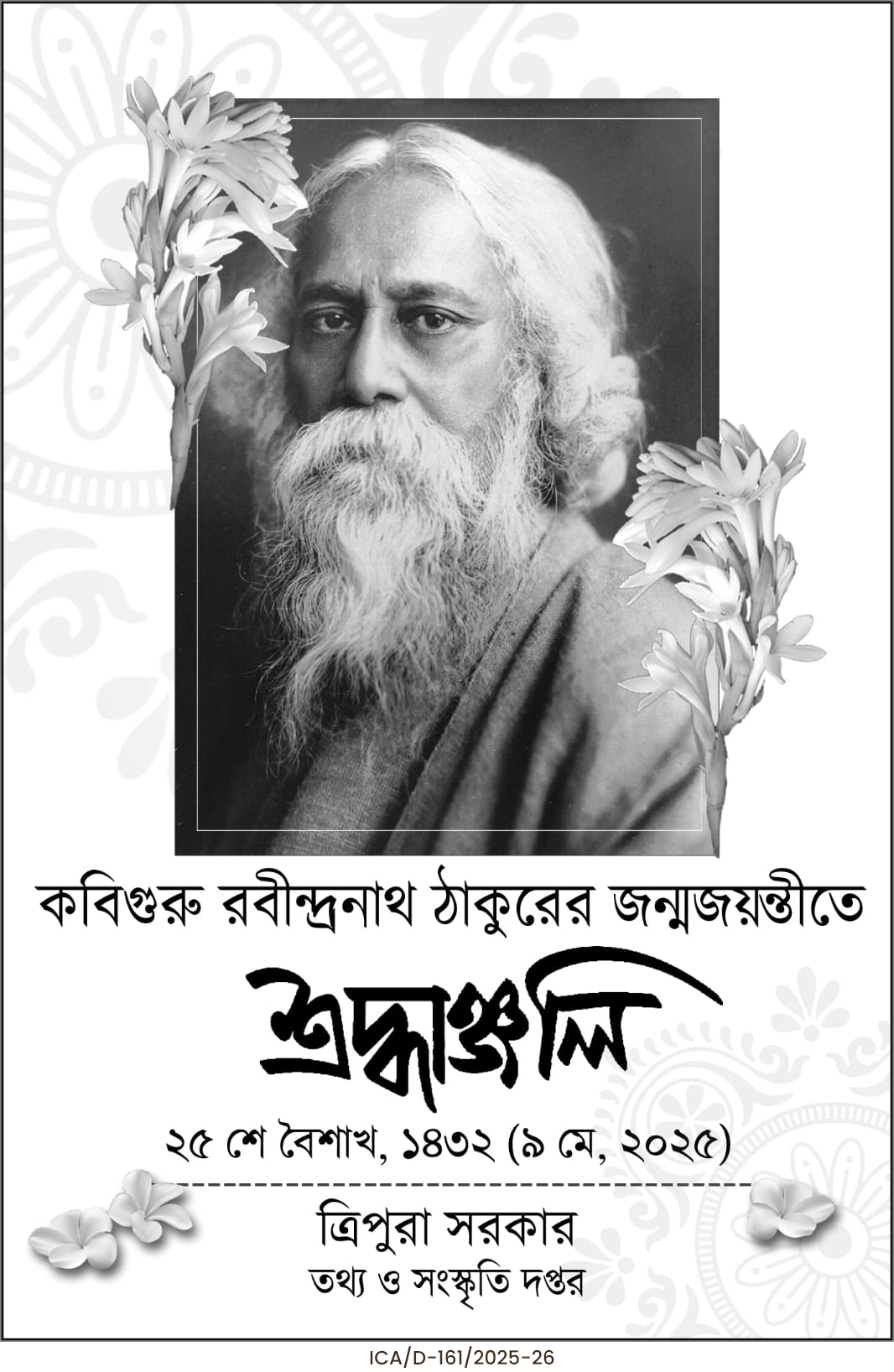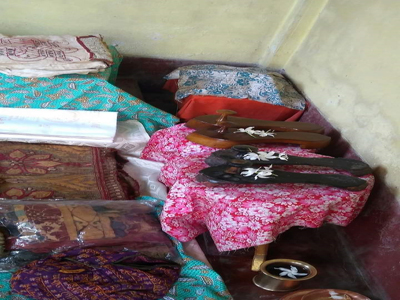
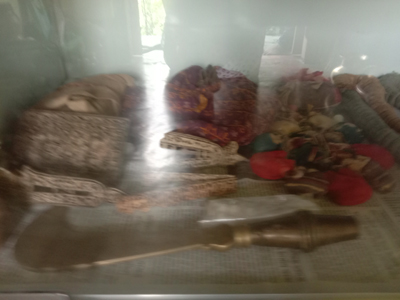
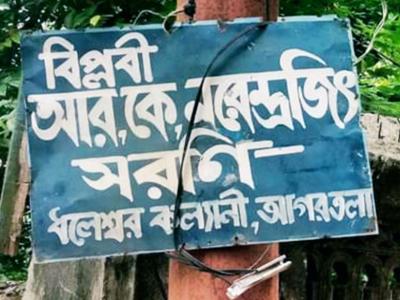
Tripura may take pride in many of her magnificent historical facts. But there are still many untold stories of past glory and heroic feats that remain buried in people’s ignorance and lack of interest in history. Here is one- the story of a 1857 Sepoy Mutiny leader whose memorabilia including royal cloth, garland, paduka, shankh (conch shell) and a handwritten copy of the Bhagwat Gita are so religously kept in the capital city of Agartala, though the people in general are unaware of them.
The name of the lion-hearted soldier is Raj Kumar (R.K) Narendrajit Singha, son of Maharaj Chourajit Singha of Manipur.
Although he was the son of Maharaj Chourajit Singha of Manipur,Rajkumar Narendrajit was born at Sonaimukh,Dunguripar area of Silchar in today’s state of Assam. Owing to some family disputes, Maharaj Chourajit Singha left Manipur and started residing at the Cachar of lower Assam region .He ruled the south-east part of Cachar and the other parts of Cachar were ruled by his two brothers, Marjit Singha and Gambhir Singha. The trio then defeated Maharaja Govinda Chandra of Cachar. After defeating Govinda Chandra,Maharaj Chourajit Singha established his capital city at Dunguripar.
When Maharaj Chourajit Singha breathed his last,Rajkumar Narendrajit was only a boy of ten years. Thereafter Narendrajit was brought up at one of his relatives’ house in Hailakandi. He was famously known by the nick name ” sana chahi ahum” which means a prince of three years. It is commonly believed in the locality that, before taking birth Rajkumar Narendrajit lived in his mother’s womb for three long years. That is why in Manipuri,he is “sana chahi ahum”– a prince of three years. The short story of his early life comes to an end following the Sepoy Mutiny in 1857 – considered to be the first battle of Independence.
It is said that three companies of the 34th British Infantry located in Chittagong area revolted against the British on 18th November 1857. The revolting soldiers started marching towards Syhllet via Tripura. After facing some difficulties in that region, they decided to move towards Cachar. There the mutineers met Rajkumar Narendrajit Singha who was then 38 years old .The soldiers requested Narendrajit to lead them from the front against the British Government. Rajkumar Narendrajit was an able fighter. His affection towards his motherland, his zeal in fighting against the British and his efficiency in warfare made him a popular leader. Narendrajit accepted the proposal of fighting the British gladly and led the mutineers of the 34th British Infantry of Chittagong against the British from the front at Cachar area.
Narendrajit’s anger against the British might have been deep rooted from the time of his father’s forceful staying at Nabadwip leaving his Kingdom-capital Dunguripar far behind. Rajkumar Narendrajit had a belief that the tyrant British government might have an intention to secure the kingdom of Chandra Kirti–the then king of Manipur, who was a British friend.
Rajkumar Narendrajit made a clarion call to all Manipuri people of Cachar area to join hands with him to fight against the British in the Sepoy Mutiny of 1857. A large number of common Manipuri people living in Cachar area came out of their houses for strengthening the hand of Narendrajit to defeat the British force. They, along with the revolting soldiers of the 34th British Infantry, prepared to launch a massive attack at the Headquarters of the British North Eastern Frontier Army situated at Syhllet.
The confrontation took place on 18th December 1857 at Latu area (now in Karimganj of Lower Assam). A British army officer, Major Beeng was killed in this operation led by Rajkumar Narendrajit .
Although Narendrajit’s army could not sustain for long in front of the strong British counter attack, but a message of a brotherhood against the British oppression was sent all over India. The mutineers led by Rajkumar Narendrajit then decided to move backward and took shelter in a hilly forest area of Mohanpur. There they planned for looting the Government treasury of Silchar for fund mobilization. When the British troops came to know about the plan a large police force from Badarpur police lines gheraoed the hill area. Due to heavy confrontation between the two groups, the rebels led by Rajkumar Narendrajit Singha suffered a massive loss with heavy injury. Rajkumar Narendrajit then decided to move to Manipur with rest of his forces. But the then British agent of Manipur McCulloch sent a message to Chandrakirti, the king of Manipur to arrange soldiers to fight Rajkumar Narendrajit. King Chandrakirti sent one of his army chiefs , Major Namoirakapa, with a good number of soldiers to stop Rajkumar Narendrajit from entering Manipur. During the heavy confrontations that took place in the time period of the 15th January 1858 to the 25th January 1858 at the Jiri hill area of Cachar Manipur border, Rajkumar Narendrajit received physical injury. Wounded and captivated Narendrajit was taken to Manipur then. Later Rajkumar Narendrajit was handed over to Cachar British authority with a charge of acting against the British government. He was also accused of patronizing the Sepoy Mutiny of 1857 in Cachar area. Then he had been exiled to the Andamans.
During that time many of the mutineers were exiled to the Andamans, though Cellular jail was not till then built ( it was built in between 1896-1906).
The Andaman part and the next of Rajkumar Narendrajit’s Andaman’s life had not been put under spotlight. After that no one knows what happened to him exactly. Some say he completed his exile term in Andamans. Some say he escaped from the Andamans. Some have the opinion that he was seen in the Sundarban areas.
However, as it happened some of his memorabilia including his paduka, his royal cloth, garland, Shankh (conch shell) and a handwritten copy of the Bhagwat Gita are still lying with one of his descendants, Lt. Birajit Singha in Dhaleswar, Kalyani area of Agartala, the capital city of Tripura. All these keepsakes are displayed only once every year on Rajkumar Narendrajit Singha’s Birth Anniversary,i.e,on the second day of Bengali month of Baishakha (16th April every year).
The family members of his descendants who are the residents of Dhaleswar, Kalyani, have made a small tomb at their house premise to preserve those memorabilia of Rajkumar Narendrajit. They worship them with full respect and devotion everyday.
But it is not enough. It is our misfortune that our historians have erased his contributions, sacrifice made for his Mother India during the time of 1857 ,Sepoy Mutiny. He also put a mirror in front of us all that, those who say the sepoy mutiny of 1857 took place only in some definite pockets of India are wholly wrong. There should not be any arguing that the movement towards Cachar which began from Chittagong by the 34th British Infantry on the 18th November 1857,is a golden effort of India’s one-nation one-spirit led by Rajkumar Narendrajit Singha. The need of the hour is to put light on the sacrifices and histories created by many of the unsung heroes of North East India too like Rajkumar Narendrajit Singh. On the occasion of Azadi ki Amrit Mahotsab “Sana Chahi ahum” Narendrajit Singh’s unknown history tells us of the fact that freedom of India was not confined to some specific areas, but it was a cumulative effort of all, across the country.

